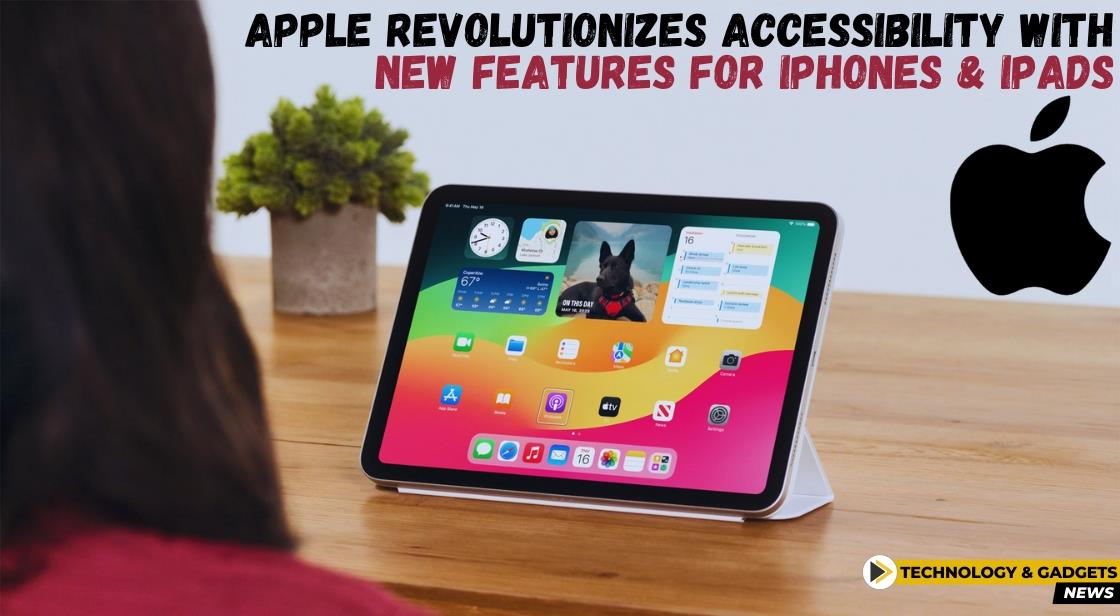Apple Revolutionizes Accessibility with New Features for iPhones and iPads

News Synopsis
With these groundbreaking accessibility innovations, Apple reaffirms its commitment to fostering an inclusive digital landscape where individuals of all abilities can fully engage and thrive. By prioritizing user empowerment and inclusivity, Apple continues to set the standard for accessible technology, driving positive change for users worldwide.
Get ready for a more inclusive Apple experience! Tim Cook, CEO of Apple, recently announced a range of innovative accessibility features designed to make iPhones and iPads even more user-friendly for people with diverse needs. These advancements, including Eye Tracking, Music Haptics, and more, solidify Apple's position as a leader in inclusive design.
A Commitment to Inclusion: Apple's Core Value
Tim Cook emphasized Apple's unwavering dedication to creating technology for everyone, regardless of ability. This commitment to inclusive design has been a core value at Apple for nearly four decades. Sarah Herrlinger, Apple's senior director of Global Accessibility Policy and Initiatives, echoed this sentiment, highlighting the transformative impact these features will have on users worldwide. (H3)
Eye Tracking: A Game-Changer for Users with Physical Disabilities
One of the most remarkable additions is Eye Tracking. This revolutionary technology leverages artificial intelligence (AI) to empower individuals with physical limitations to control their iPhones or iPads using only their eyes. The device's front-facing camera facilitates swift calibration, eliminating the need for additional hardware and enabling effortless control through eye movements.
Music Haptics: Feeling the Rhythm in a New Way
Music lovers who are deaf or hard of hearing can rejoice with the introduction of Music Haptics. This groundbreaking feature utilizes the iPhone's Taptic Engine to translate music into vibrations that correspond to the audio. This novel approach creates a whole new way to experience music, fostering a deeper connection for users who may not be able to perceive sound in the traditional way.
Beyond Touch: Vocal Shortcuts and Speech Recognition Advancements
Apple is also introducing Vocal Shortcuts, empowering users to create custom sounds that Siri can recognize. This innovative feature provides a hands-free alternative for completing actions, ideal for users who may have difficulty with traditional touch controls. Additionally, the Listen for Atypical Speech update enhances speech recognition for users with diverse speaking patterns or those affected by conditions like cerebral palsy or ALS.
Combating Motion Sickness: Vehicle Motion Cues
For those who experience motion sickness while using iPhones or iPads in moving vehicles, Apple has a solution. Vehicle Motion Cues present a groundbreaking approach to this common challenge. Animated dots displayed on the screen's edges work to alleviate sensory conflicts between visual and physical motion cues, significantly improving user comfort while on the go.
Enhanced CarPlay and visionOS: Accessibility on the Road and Beyond
Accessibility improvements extend beyond iPhones and iPads. CarPlay receives a boost with the inclusion of Voice Control, Color Filters, and Sound Recognition, making driving experiences more inclusive. Meanwhile, visionOS gains valuable features like Live Captions, further supporting users with vision or hearing impairments.
Beyond Software: Accessibility Solutions for All
Apple's dedication to accessibility goes beyond software updates. Existing features like Virtual Trackpad and Switch Control cater to users with physical limitations, providing alternative control methods for those who may struggle with traditional touchscreens.
The Future of Inclusive Technology
Apple's commitment to developing innovative accessibility features like Eye Tracking, Music Haptics, and Vocal Shortcuts demonstrates their unwavering dedication to creating technology for everyone. These advancements solidify Apple's position as a frontrunner in inclusive design, paving the way for a future where technology empowers all users, regardless of their abilities.
You May Like









